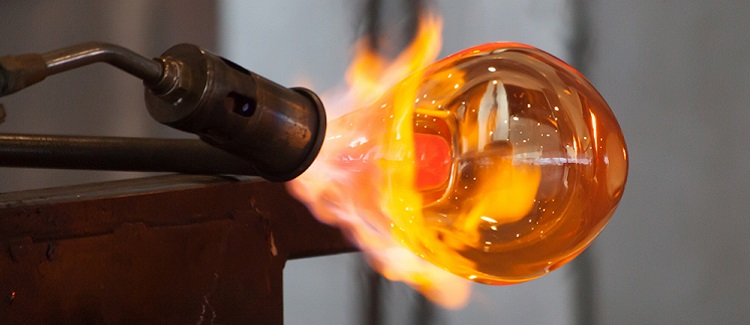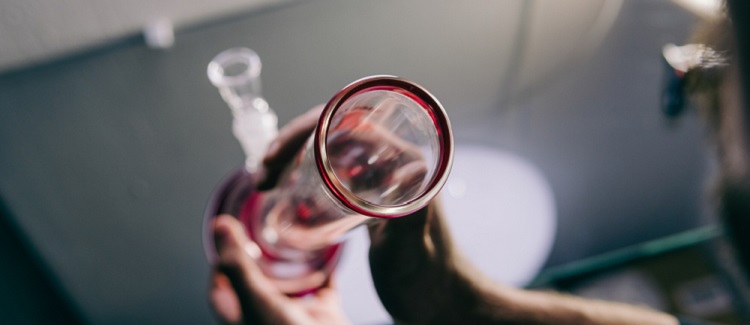How glass bongs are made - the art of glassblowing
Big ones, small ones, some as big as your head; glass bongs come in all shapes and sizes. Their construction isn't the result of complex machinery, but the highly skilled techniques of expert glass blowers. Discover what is involved in making a glass bong and how to check the quality of your next purchase.
It is true that the introduction of the industrial age streamlined a lot of handmade processes. The result may be a more efficient output, with uniform qualities, but is it not the slight imperfections that give objects their unique properties?
Fortunately for us, the majestic art of glassblowing is something machines can’t quite replicate, at least not to the same levels of creativity.
THE BEAUTY OF GLASS BLOWING
It is from the craft of glass blowing that many experienced hands are now turning to the cannabis industry. With a boom in demand driven by increasing legalization, cannabis paraphernalia has never been more popular. Nothing screams sophisticated stoner like an elaborate and decorative glass bong. Yes, sophisticated stoner is a demographic.
Glassblowing is considered such a tremendous skill that during its humble origins, back in 550 BC, Phoenician glass blowers from southern Lebanon were prohibited from travelling for fear of their knowledge being leaked. Luckily no such restriction is still in place, and talented glass blowers can come as go as they please.
GLASS BONGS START AS A GLASS BUBBLE

Firstly, glass is superheated to a temperature of up to 1163°C, making it malleable enough to shape. Then, utilizing a hollowed steel rod or blowpipe, the craftsmen literally blow on one end filling the molten glass with air, forming a bubble-like shape.
That glass bubble can then be manipulated into just about any shape imaginable. The airflow supplied by the glass blower can be manipulated by using air holes drilled into the steel rod.
REFINING THE GLASS BLOWING PROCESS
Secondly, to provide a more uniform design (an integral feature of crafting bongs) the blown glass bubble can be added to a lathe to ensure a consistent cylindrical design. Additional blowtorches can be applied to the glass structure helping to create or add bowels, percolators, or just about any elaborate designs features imaginable. Who doesn't want glass dragon wings on a bong?
It is, in fact, a combination of several techniques that go into making every type of glass bong. Even the most straightforward designs still start life as a malleable glass bubble on the end of a steel rod.
THE BALANCE BETWEEN GLASS QUALITY AND THICKNESS

Ignoring the decorative features of glass blowing, there is a lot more to consider as a consumer than the eye-catching design or trippy color scheme. Defining the quality of a glass bong comes down to two primary factors. Which type of glass has been used and the thickness of said glass. Knowing what to look out for will make sure your next bong purchase stands the test of time and use.
BONG GLASS TYPE
The creme de la creme of glass is high-quality borosilicate glass; it is the same glass that is used to make premium grade lab equipment. Borosilicate glass is also significantly more durable than the cheaper Chinese offerings that some head shops offer.
If you are unsure of which type of glass the bong has been made from, an excellent way to determine the quality is by observing any joins or wields. Smooth, uniform, clean joint welds are sure signs of not only a skilled glass blower but a superior quality glass. Cheaper glass would likely crack under the same circumstances.
BONG GLASS THICKNESS
There is a common misconception that if something is heavy, it is better quality than its lighter counterpart. In glass bong construction, the heaviness will be a result of the glass thickness. This thickness can range anywhere from 3-9mm with the 9mm glass feeling heavier in hand.
If the bong you have chosen has average looking wields and cheaper quality glass but a greater thickness it is always better to go with a high-quality glass alternative that may not be as thick.
The superior quality glass is less likely to break regardless of thickness, so even if a cheap glass bong has glass that is 9mm thick, it is just as feasible it will break after repeated use. If you can get a bong that features both high-grade glass and greater thickness than you are on to a win-win purchase.




